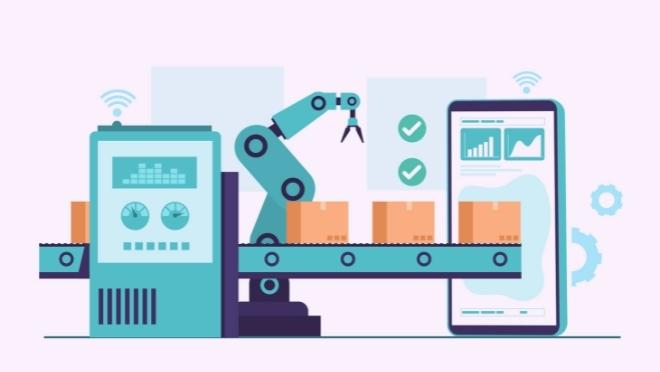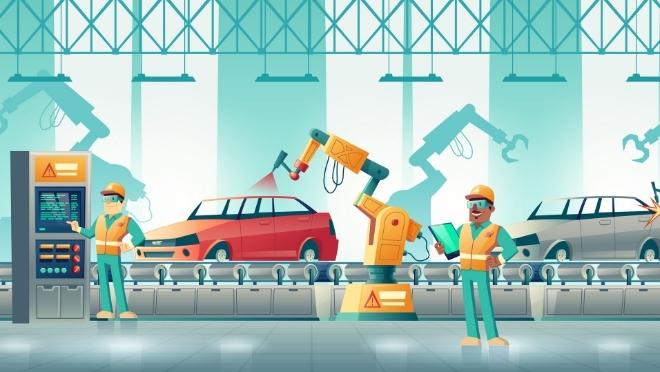Metal is one of the most significant industrial sectors that generate revenue for today’s economy. It affects various end-user applications and can serve multiple industries: automotive, agriculture, aerospace, medical electronics, construction, etc. Because it is enormous, a business requires automation to meet the requirements and productivity of the supply-demand.
Robots are employed to perform various tasks within the industry of metal. Their jobs range from cutting and part handling to welding assembly, painting, and welding.
Let’s explore some possible robotic applications that have made the metal industry go faster and more straightforward:
Table of Contents
Robotic Applications in Cutting and Machining
Many tasks are repetitive in a factory or machine tool shop and could be automated with robots.
Waterjet Cutting Robots
As its name suggests, a waterjet cutter uses an extremely powerful, high-pressure steam from water that cuts a vast array of different materials. Since the nozzle can be reduced to 0.002 inches (0.051 millimeters), the water jet cutter can cut with high precision, such as circles and precise internal angles.
Using a high-pressure waterjet for soft materials such as rubber, plastic, and wood suffices. You could add an abrasive component in waterjet cutting for more complicated materials like stone, metal, and glass. The benefit of cutting with water jets is that there isn’t a “heat-affected zone” essential aspect for certain materials that can expand and contract when heated.
Waterjet cutting robots can make intricate and intricate objects. With seven degrees of freedom, the robot can move towards the material in any direction, offering its user an enormous amount of space.
A robotic arm that controls the waterjet cutter produces quality, reliability, and productivity.
A few other types of robots that are part of that category of Machining & Cutting include cutoff robots, dinking robotics, lancing robots, and other robots that do lancing and nibbling and cutting, perforating, and notching.
Robotic Applications in Packaging & Palletizing
Packaging and palletizing are two joint operations in warehouses, manufacturing facilities, and distribution centers. The repetitive nature of palletizing and packaging tasks is increasing. This could affect the safety and health of employees. Robots perform these tasks to safeguard workers from injuries.
Packaging Robots
The metal industry is an area that is overgrowing. Packaging Robots are also becoming adept at handling metal and similar products delicately through pick and place packaging robots.
Packaging robots can design and manufacture different sizes of boxes in a matter of minutes, based on the need.
As an example, packaging robots can automatically place giant wire spools inside boxes that have an opening for a shipping cap on the bottom is first inserted and an upper lid added at the end before sealing the box is closed. The package can be labeled before shipping
Robotic Applications for Assembly & Dispensing
Making small pieces to form larger pieces is a vital component of manufacturing. In the past, it resulted from human talent, and vision and intelligence were the primary ways this assembly could be accomplished. Recent advances in technology have allowed robots to complete some of these jobs. Because many assembly processes require adhesives, robots able to use bonding agents can be similar technologies.

Most assembly robots are attached either to the flooring or an overhead trestle. They cannot alter their position. Most assemblies and adhesive dispensing machines are of their XYZ and Cartesian configuration. Advanced systems will include six-axis robotics, which can be more mobile than the XYZ robot.
Robotic Applications in Handling & Picking
Robots that move goods in the confines of a warehouse or take items from the tote before putting them in shipping containers are examples of picking and handling robots. Because of the growth of online shopping, there is a massive demand for robots capable of gathering and fulfilling orders.
Pick and place robots
It is probably the most widespread use of robots in the manufacturing process. Robots can take and unload processing equipment or take components from the conveyor line, put them in totes or shipping containers, and then sort pieces into an ordered form from randomness.
This type of robot is typically employed when the amount of variables is low. For instance, the same robot is on an assembly line and must be put on the tray, placed on top of it, or purchased.
Since the range of objects that need to be handled is limited, The End-of-Arm-Tooling (EoAT) is more superficial. The items placed and picked in a manufacturing setting are pre-determined dimensions, shape, and weight. This means that we can adjust the type of gripper that the robot has to employ for the specific object, and the force that grips the robot could be much more easily determined.
Robotic Applications in Casting & Molding
It is the method of making solid objects using liquid metal injected into a mold or cavity, which is then shaped according to the shape of the thing produced. Molding is like casting, except that the material used is typically plastic, though other materials may be used. The process is quicker than casting.
Injection Molding Robots
The Injection molding provides accurate results, even in high production volumes. Also, Injection molds are costly to build.
The robotic automation of injection molding involves removing the part from the mold, cutting off excess material, removing the rest, and then completing the workpiece into an unloader or conveyor. Like die casting using robots, robotics during injection molding boosts productivity and improves safety.
A few other types of robots included in that category are casting. Molding comprises those employed in continuous casting, evaporative-pattern casting cast-on molds that are permanent, such as sand casting or mold casting using plaster, shell molding, and vacuum mold.
Robotic Applications in Painting and Coating
Industrial coating and painting are techniques for applying coatings or paints to an object. In manufacturing, the piece is defined as coated or painted in size and shape, so the coating and painting processes are highly repetitive.


Coating and painting processes are ideal for robotic automation. The outcomes are consistent with excellent quality. The machines can work without interruptions and no downtime except for routine maintenance. Utilizing robotics does not expose workers to dangerous gasses or chemicals.
Robots Spray Painting
Industrial painting robots have been in use for a long time in the automotive manufacturing industry. The first painting robots were hydraulic, making them heavy and costly.
The modern printing machines are less affluent, cost less, and are affordable for small-sized companies. Industrial painting robots can keep an exact spacing between the spray nozzle and the piece of work and the speed at the spray nozzle’s travel in both directions, which is essential to prevent runs and drips. Precise control of flow and pressure is crucial to guarantee the same outcomes. Industrial painting robots producing a superior result accomplish all this.
Robotic Applications in Finishing and Sanding
Various industrial processes like casting, drilling, casting, and welding leave unwanted material behind or produce sharp or ragged edges. The unwanted material is removed through robotic applications to get the final product. This is finishing or sanding by mechanical applications.
Robotic Applications in Hygiene & Cleaning
Cleaning up industrial facilities is essential for the quality of products and the safety and health of the workers in the facility. Cleaning is usually dull. So, robots are more often employed in cleaning applications.
Robotic Applications for Inspection & Quality Control
Specific quality control issues can be life-threatening because a defective part, or a poorly installed component, could cause the death of a person. Human inspection is typically only 80 percent exact. The assessment of robots is 100 percent precise.
Final Words
Robotic applications contribute more to the revolution in industrial technology by performing routine and repetitive tasks. We’ve only talked about a handful of Robotic
Applications in this article. There are a lot of other possibilities of robotics for the metal industry, such as assembly, machine tending, and quality checks.
With Artificial Intelligence (AI) advancements, robots’ capabilities are expanding. The possibilities are still growing, and there’s much more to be done before we can maximize the use of robotic applications in the metal industry.




